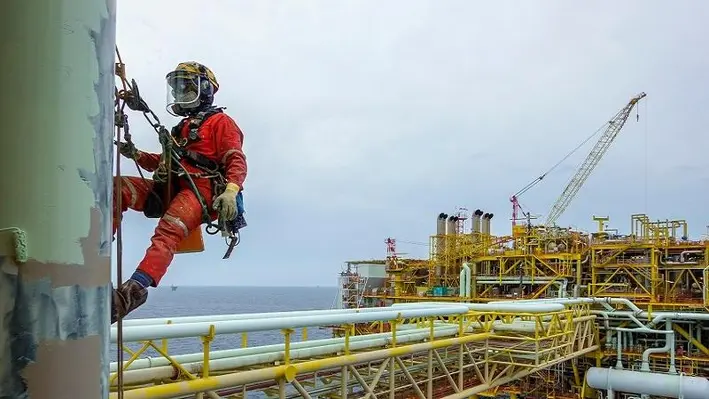

THREE60 Energy, a leading independent energy service company offering complete asset life cycle solutions, has acquired Fraser Well Management, a well and pipeline operator and well management specialist, in order to strengthen its wells credentials.
THREE60 Energy will become one of only two companies that can undertake the role as outsourced duty holder (installation operator), pipeline operator and well operator across the asset life cycle, further positioning the company as a strategic services partner.
Fraser Well Management’s services span the complete well lifecycle, both onshore and offshore, with comprehensive end-to-end well and pipeline operator solutions provided to customers across the world. The company also provides well management, decommissioning, specialist engineering, and commercial services, with sustainability as a key operational consideration.
All of Fraser Well Management’s personnel will transfer to the THREE60 Energy team.
Walter Thain, Group CEO at THREE60 Energy, commented, “The capabilities and expertise that Fraser Well Management has accumulated will greatly benefit the integrated solutions we offer our customers throughout the asset life cycle. We are immensely proud to have our new team members join THREE60 Energy, as we can continue to provide better energy together.
“As we continue to transition into sustainable and renewable energies alongside traditional means of energy production and storage, there has never been a more pertinent time to invest in the future of our business and our place in the energy supply chain.”
Lasse Hermansson, Managing Director at THREE60 Energy Norway, added, “The breadth of transferrable knowledge across THREE60 Energy is crucial for capitalising on the synergies across disciplines, and the addition of Fraser Well Management’s skills and people will greatly add to our expertise.
“This not only enhances our UK capabilities, but provides additional competencies and services to our Norwegian and global business. We are extremely excited about the acquisition and see a great cultural and collaborative fit with the excellent team at Fraser Well Management.”
Nick Ford, Managing Director at Fraser Well Management, remarked, “We have watched the rapid and sustained growth of THREE60 Energy alongside our own development and can see the synergies that the integration of Fraser Well Management’s service offerings combined with that currently provided by THREE60 Energy will provide our clients better solutions to their energy needs. This deal is a natural progression for our services and people, as both can continue to grow and expand under THREE60 Energy.
“As late life, CCUS and decommissioning play an ever more significant role, we are proud to be part of THREE60 Energy Group as the company delivers in these key areas.”
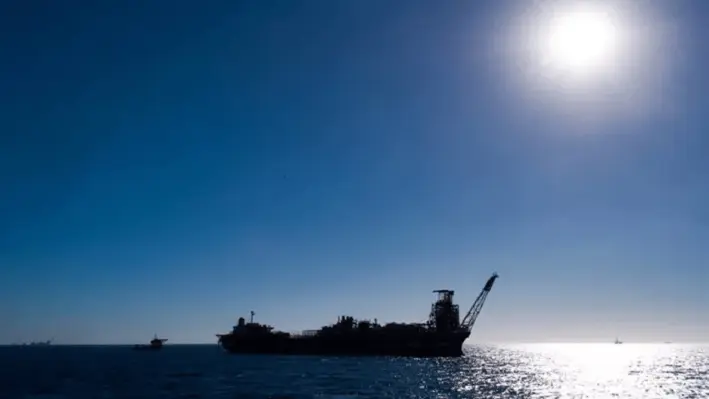

The Australian Government has contracted Wood, a leading consulting and engineering company, to oversee the first decommissioning phase of the Northern Endeavour FPSO facility in the Timor Sea.
The Northern Endeavour is a 274 m long FPSO, permanently moored between the Laminaria and Corallina oilfields, approximately 550 km northwest of Darwin in the Timor Sea. Production began in 1999 and peaked at 170,000 barrels of oil per day. In 2019, the facility was shut down by NOPSEMA after an immediate threat to health and safety was found at the facility. After owners Northern Oil & Gas Australia went into liquidation, it fell to the Government to maintain and ultimately decommission it.
Wood will work closely with the Department of Industry, Science, Energy & Resources (DISER) and contractors to ensure the safe, efficient and responsible initial phase of the decommissioning scope.
Ralph Ellis, Wood’s President of Operations across the Asia Pacific region, commented, “The responsible decommissioning of the Northern Endeavour FPSO is of great national interest, with safety, cost, and sustainability in sharp focus throughout.
“We are proud to have been selected by the Australian Government to represent their interests in the first phase of the field’s decommissioning journey. As Owner’s Team, we will leverage our unrivalled offshore decommissioning expertise garnered in mature basins across the world to support the successful delivery of this critical scope of work.
“We look forward to working closely with both DISER and the lead contractor on this important project.”
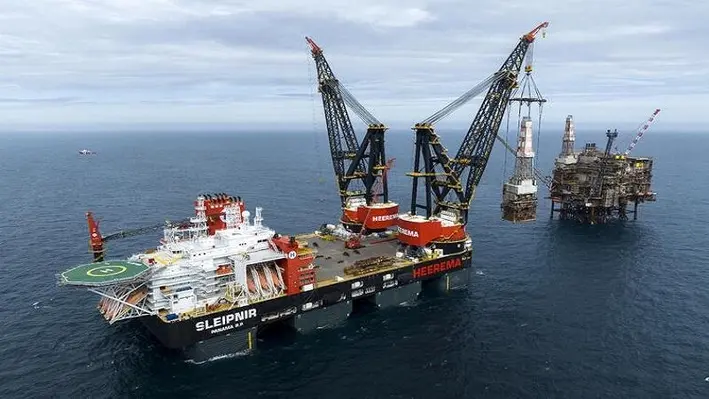

Abu Dhabi National Energy Company PJSC (TAQA), an integrated utility company in the Europe, the Middle East and Africa region, has announced the completion of safe and successful removal of the Brae Alpha West drilling rig and the Brae Bravo upper main jacket in the northern North Sea.
The operation, which was the latest in TAQA’s extensive UKCS decommissioning programme, involved the removal and transport of more than 12,000 tonnes of material from the Brae field in the UK North Sea.
The HAF Consortium, Heerema Marine Contractors and AF Offshore Decom, were contracted to execute the operation on behalf of TAQA.
The Heerema-operated Sleipnir semi-submersible crane vessel first removed the 1,000 tonne Brae Alpha Rig 1, in a single lift on 20 June.
Sleipnir then moved to Brae Bravo to remove the 11,000-tonne upper main jacket. This forms part of TAQA’s decommissioning obligations and follows the removal of the Brae Bravo topsides modules and flare bridge, jacket and tower last summer – one of the largest topsides removals in the UK North Sea.
Both Rig 1 and the Brae Bravo jacket have been safely offloaded at the AFOD Environmental Base in Vats, Norway, and are being processed with the aim of reusing or recycling 95% or more of the material, which is expected to be completed in 2023. The entire operation was successfully completed with zero health and safety incidents.
Donald Taylor, TAQA Managing Director for Europe, commented, “TAQA’s extensive late-life portfolio positions us at the forefront of decommissioning in the UK. By adopting valuable lessons learned during last year’s successful Brae Bravo topside removal campaign, we are continuing to develop our skills and capabilities supporting the transition from operations to removals and disposal.
“The coming years offers some of the most interesting challenges and opportunities for our workforce and wider industry. TAQA is proud to pioneer this change while maximising the value of our assets and playing a valuable role in the energy transition.”
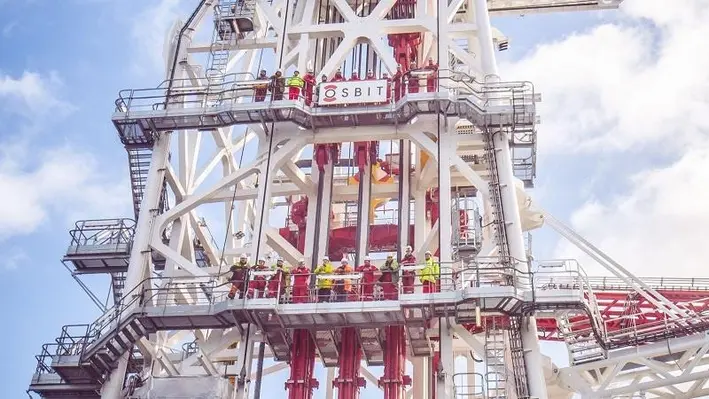

Osbit, an offshore technology company, has delivered a new intervention tower system to FTAI Ocean which comprises 1,300 tonnes of equipment and stands at 40 metres tall.
The tower will enable riser and riserless based well intervention activities in water depths of up to 1,500 metres and integrates a series of innovations derived from the company’s extensive experience in developing well intervention and offshore handling equipment.
The tower’s vertical racking system reduces the need for well centre access, while maximising deck space with its small footprint. An active and passive heave compensated platform supports coil tubing, slickline and e-line operations, while safe personnel access is facilitated via an integrated walk to work system.
For riserless operations, the system has four guide wires and two pod wires integrated with the existing vessel crane which provides up to 250 tonne Safe Working Load (SWL) active heave compensation. The system’s deck skidding system minimises the need for crane lifts, increases the operating window, and enables equipment to be directly loaded into the well centre.
The tower was fabricated and assembled at Wilton Engineering Services in Teesside, UK.
Osbit Director Steve Binney, commented, “Completing this project is a huge achievement for Osbit, and we have worked extremely hard to deliver our largest and most technologically complex engineering system yet. As a team, we have overcome many obstacles to reach this important milestone, which shows not only our capability, but that of North East England, and our fantastic supply chain."
Project Director, Steve Bedford, added, “The delivery of this project is Osbit’s biggest milestone yet and is testament to the unbelievable efforts of the whole Osbit team, most of whom have made a direct contribution towards making this happen. This tower system is a prime example of how we work from first principles, combining our proven technology modules with fresh thinking to produce exciting engineering systems for the offshore world.
"It has also been rewarding to watch our team grow and develop as they supported this project’s development, and we are already applying this learning on to our latest projects and concepts for the offshore wind market. With the build complete, we are looking forward to providing further support to FTAI Ocean now that preparations are underway for transportation to Singapore.”
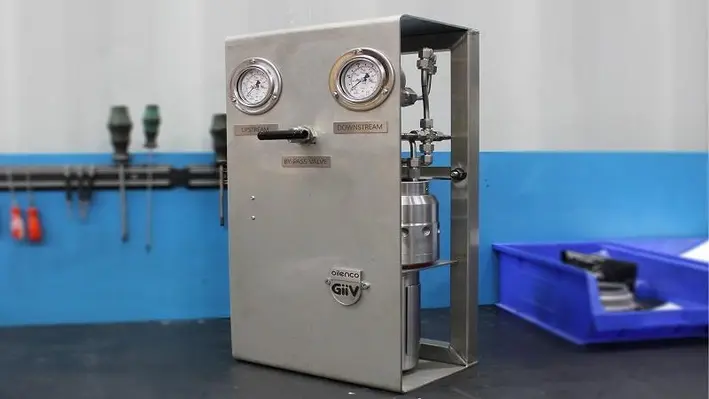

In the oil and gas industry, tubing retrievable subsurface safety valves (TRSSSV) are routinely tested to ensure they provide fail-safe well protection. However, it is not uncommon for these safety valves to reveal seal integrity issues when closed.
As the hydraulic control line bypasses all conventional wellhead valve closure systems, this increases the risk of well integrity being compromised and the likelihood of uncontrolled hydrocarbon gas migrating to the surface.
When control line gas ingress is a known issue, it is feasible to manually isolate at the control line inlet, however under an emergency shutdown (ESD) situation, when the safety of personnel is the highest priority, manual intervention may not be possible, potentially leaving an exposed route for hydrocarbon gas to migrate through the main hydraulic power unit (HPU).
In 2016, during a routine test, a North Sea operator discovered gas seeping through the TRSSSV through a failed seal, travelling up the control line, accumulating at the HPU. Whilst this was a scheduled test and manual intervention was possible, it was categorised as a severe risk should an ESD situation arise. Oilenco identified the necessity for a fully autonomous solution and designed the Gas Ingress Isolation Valve (GiiV).
The primary purpose of the GiiV is to perform the same function as manually isolating the control line, but without human intervention. Situated in close proximity to the control line inlet, the system is fully autonomous and does not require additional infrastructure to operate. By using elements of the existing well control system, the GiiV can detect a reduction in pressure of the safety valve control line system. When the system is depressurised sufficiently to fully close the downhole safety valve, the GiiV automatically isolates the control line.
To reopen the GiiV, pressure from the HPU is applied, and with the GiiV open, further system pressure re-opens the downhole safety valve allowing operations and production to resume.
The GiiV has been designed so the isolation process can be repeated time and time again as often as required without human intervention.
Whilst the GiiV does not fix the root cause of the gas ingress, it acts as a safety barrier allowing the operator time to plan a solution, protecting people, the asset, and the environment.

Warren Ackroyd, Managing Director, Oilenco, said, “Presenting this solution to market was a game changer in offshore safety and hydrocarbon gas ingress management. Each GiiV complies with UKCA certification, and we are constantly reviewing the technology to ensure it continues to play a vital role in the life safety and asset integrity of offshore assets.
There are currently 18 GiiV’s in the field installed by various operators across the North Sea, Vietnam, and Indonesia with a further 14 units currently in production in 2022. As Oilenco celebrate six years since the conception of the GiiV, this tried and trusted product has become a safety critical solution for gas ingress challenges and an established part of well integrity assurance.”
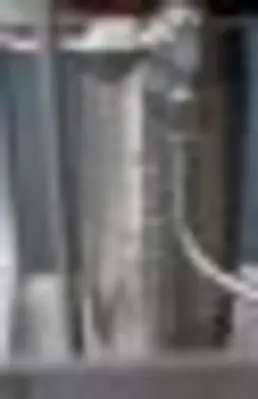
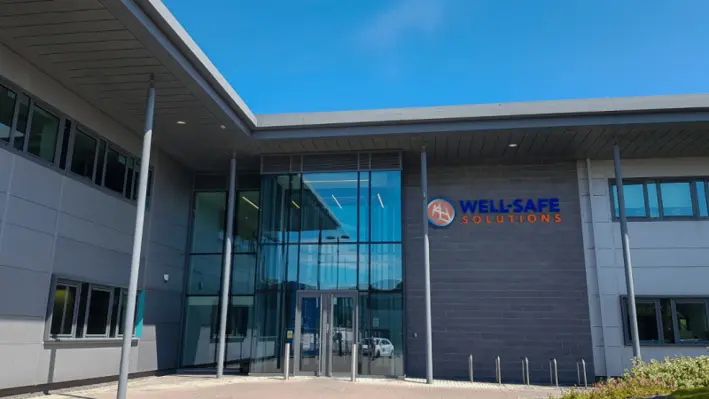
 Specialist well-decommissioning services provider Well-Safe Solutions has announced the completion of its third investment round, raising £50 million for the company.
Specialist well-decommissioning services provider Well-Safe Solutions has announced the completion of its third investment round, raising £50 million for the company.
Well-Safe Solutions said it will use the funds for the purchase of its third rig and to broaden the capabilities it offers to clients around the world. The funding round was led by MW&L Capital Partners, a London-based principal investment and financial advisory firm, with participation from a consortium of new and existing investors.
The latest investment brings the total capital raised by the company to over UK£150mn.
Phil Milton, Chief Executive Officer of Well-Safe Solutions, said, “This further investment demonstrates our strong investor support, enabling ongoing growth here in the UK as well as delivering the next stage of Well-Safe’s international growth.”
“The capital raised in previous investment rounds has been instrumental in enabling the company to put in place a world-class portfolio of bespoke well plug and abandonment (P&A) assets, backed by expert onshore and offshore teams. These investments are now bearing fruit thanks to recent contract wins and workscopes throughout the North Sea for our rigs and well engineering teams.”
“As we continue to build upon Well-Safe’s operational record, we are looking forward to exporting this model to new markets, which have expressed an interest in our collaborative, multi-well, multi-operator approach to well decommissioning,” Phil added.
Well-Safe was recently awarded its first contract with Ithaca Energy for the Well-Safe Protector jack up rig, which will be used to decommission several wells located in the Southern North Sea. The business also announced the acquisition of the ex-Awilco Drilling WilPhoenix semi-submersible rig, which is to be renamed the Well-Safe Defender.
The Aberdeen-based company said that it is building on this positive momentum, with over 100 new employees joining the company in the past 12 months.
Alasdair Locke, Chairman and majority Shareholder of Well-Safe Solutions, said, “This financing allows a step-change in the capabilities of Well-Safe Solutions, enabling us to be competitive on a global basis. I’m grateful for the support from existing and new investors.”
Julian Metherell, a founding partner of MW&L Capital Partners, added: “We are delighted to continue to partner with Well-Safe to build a world-class decommissioning business.”
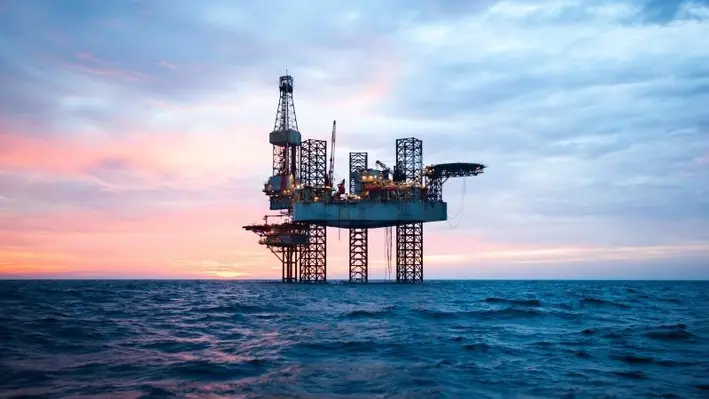
 EXCEED has announced the award of a milestone, vessel-based well plugging and abandonment campaign to be carried out in partnership with Mermaid Subsea Services UK (Mermaid) on behalf of four operators.
EXCEED has announced the award of a milestone, vessel-based well plugging and abandonment campaign to be carried out in partnership with Mermaid Subsea Services UK (Mermaid) on behalf of four operators.
The result of a tranche of initial bids from the strategic partnership builds upon EXCEED’s 130+ well abandonment track record and is the company’s largest vessel-based well P&A campaign to date, whilst representing Mermaid’s entry into the North Sea marketplace.
Due to commence Q3, the multi-operator vessel-based campaign is thought to be one of the largest campaigns of its type to be undertaken on the UKCS for at least a decade, and currently comprises the decommissioning of ten E&A wells across Northern, Central and Southern areas.
Based on the campaign approach, which has been highlighted as an important lever in the cost reduction of well P&A, the potential for this to become a multi-operator programme was the objective upon which the partnership was founded.
Mermaid Operations Director, Scott Cormack, explained, “New contracting models are critical to achieving the decommissioning cost reduction target set by the North Sea Transition Authority (NSTA). However, the NSTA reported in 2021 that these models were yet to become the norm and that a lack of collaboration was, in part, responsible.
“Our aim is to help address that situation, not only through our own collaboration with well management leaders EXCEED, but also by encouraging operators to consider the benefits of a lump sum, campaign approach to decommissioning. That this has been the precise outcome of our first campaign is testament to the clear appetite for this approach amongst the operator community,” Scott added.
John Anderson, Commercial Director for EXCEED commented, “Our well decommissioning experts have worked on some of the sector’s highest-profile abandonment campaigns, and it’s clear to us that this partnership brings something unique to the sector; a turnkey well P&A service, which provides not only the technical downhole capabilities but also complete control over vessel schedules.
“In this way, we can optimise timings to allow for multi-operator campaigns. With mobilisation/demobilisation accounting for a third of the total well P&A cost, this approach makes good economic sense, as well as minimising the environmental impact of multiple, separate campaigns.”
NSTA Head of Decommissioning Pauline Innes said, “The NSTA is actively promoting multi-operator, well-decommissioning campaigns – which can deliver substantial cost efficiencies, reduce emissions and give suppliers confidence to invest – and is encouraged this approach has gained traction in the North Sea market.”
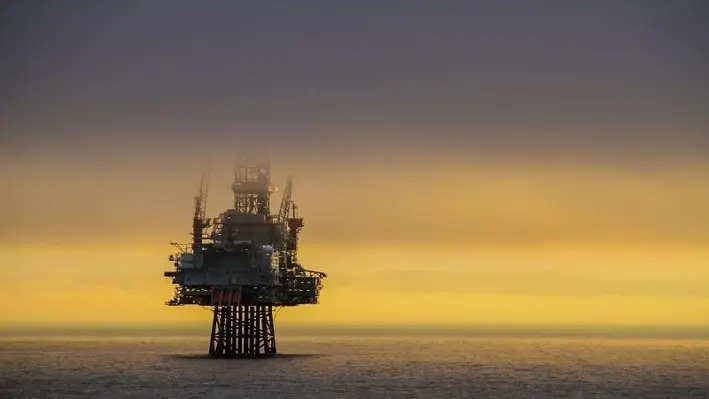

Plexus Holdings PLC, an oil and gas engineering services business and owner of the proprietary POS-GRIP friction-grip method of wellhead engineering, has been awarded a purchase order for plug and abandonment equipment and services from Oceaneering International Services Limited, a division of Oceaneering International Inc.
The order includes tieback and subsea well control equipment together with hydraulic controls and services. The rental equipment will be used to support Oceaneering's vessel-based P&A services for a six-operator joint campaign in the Dutch Sector of the North Sea.
Ben Van Bilderbeek, CEO of Plexus, commented, "We are delighted to be working with Oceaneering on this North Sea project and anticipate this opportunity leading to further potential for P&A work for Plexus, especially given the sector's growth forecasts. This new order for our unique services on a multi-well campaign is a major step forward for Plexus and represents a diversification of our business into support-vessel based P&A work."
"After many lean years and following the collapse and near collapse of many companies in the oil and gas services sector in 2015/16, it is reassuring to see a widely reported recovery in drilling activity and capital expenditure around the world. Encouragingly this has led to an increased level of interest in our Exact-EX exploration wellhead rental services, Centric-15 mudline hangers and our POS-GRIP ‘HG’ production wellhead technology, for which we are positioning the company to benefit, by way of planned investment in additional inventory and increased customer engagement."
This order is estimated to generate revenues of circa UK£500,000 for Plexus in calendar year 2023, and has the potential to lead to other similar work in the North Sea and internationally both with Oceaneering and other customers.
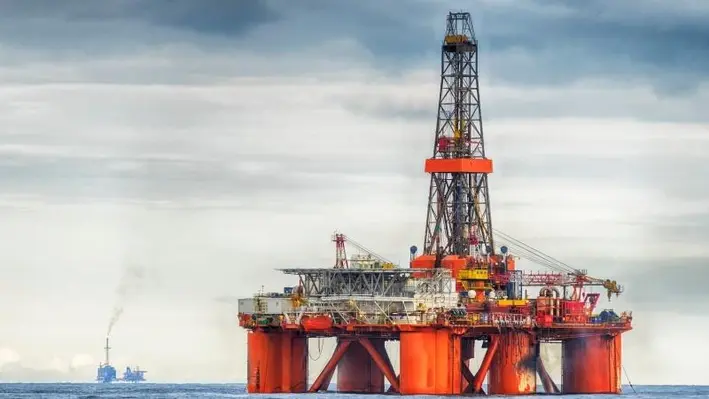

Fairfield Energy recently announced the removal of the topsides from Dunlin Alpha platform which is the latest milestone in the decommissioning of the four fields which make up the Greater Dunlin Area.
Following the hook down and removal activities undertaken by the HAF Consortium (Heerema Marine Contractors and AF Offshore Decom) last month, Heerema’s SSCV Sleipnir transferred the remaining modules to its deck before removing the main 11,750-tonne Module Support Frame (MSF) in a single lift. The Sleipnir then returned to AF Offshore Decom’s Environmental Base at Vats where more than 95% of the Dunlin topsides will be recycled.
The Dunlin Alpha installation, located approximately 137 km northeast of Shetland and in a water depth of 151 m, produced its first oil in 1978. In the 37 years that followed, more than 522 million barrels of oil were recovered from the Greater Dunlin Area, comprising the Dunlin, Dunlin S/W, Osprey and Merlin fields. Fairfield Energy acquired the assets in 2008 and took over full operatorship in 2014, maximising production during its late-life stage and then progressing its subsequent decommissioning programmes.
Alan Scott, General Manager for the Greater Dunlin Area Decommissioning Project said, “This is a poignant milestone for an installation which has been a central part of UK North Sea production since the industry’s earlier days. Notably, in 1978 it was the first field to produce into the Sullom Voe Terminal on Shetland, paving the way for the many which came after.
“The Greater Dunlin Area itself has made its mark but it’s important not to forget the thousands of people who have visited or called the platform their working home. Dunlin has always been blessed with a strong team spirit and this is another core part of its legacy, having influenced the careers of many across the industry. I’d like to thank everyone who has been involved with Dunlin over the years, helping the asset overcome any challenges and achieve its many successes,” Alan Scott added.
An agreement was reached with the UK authorities in 2015 that the fields had reached Maximum Economic Recovery (MER), enabling Fairfield to begin the multi-asset, multi-year decommissioning of the Greater Dunlin Area. Since then, Fairfield has developed, consulted upon and gained the approval for its decommissioning proposals and executed a series of scopes which, at their peak, employed 600 personnel from over 26 drilling, subsea and topside operations companies.
Gary Farquhar, Platform and Infrastructure Decommissioning Manager said, “Project execution has involved the P&A of 12 Osprey and four Merlin subsea wells; the decommissioning of the extensive subsea infrastructure associated with those satellite fields; the decommissioning of subsea power import, gas import and oil export infrastructure; the P&A of 45 platform wells; and the engineering down of the Dunlin Alpha topsides. We are pleased to have added Topsides Removal to the list of activities that have been safely and efficiently executed.”
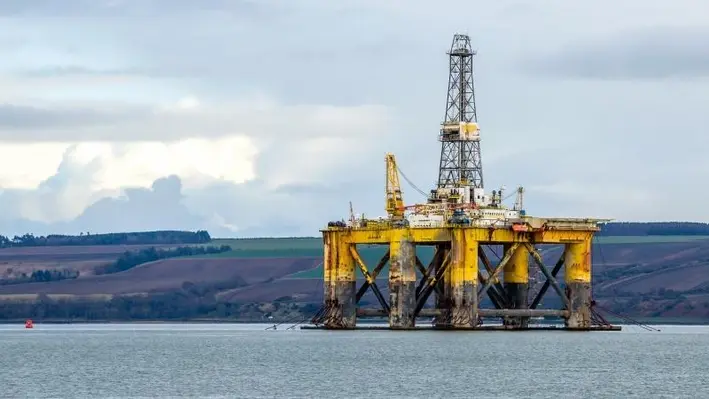

Global well integrity and production optimisation expert Coretrax has successfully deployed the ReLineMNS system across three wells and expanded a total of more than 27,000 ft of tubulars, a world record-breaking project in the Utica Basin, for a major gas operator with its ReLine Expandable Technology.
With one of the expandable liners reaching 9,000 ft in its expansion, all installations smashed the previously held record of 7,243 ft by at least 1,000 ft.
The total setting time from beginning expansion to exiting the top of the liner took only nine hours per well over a total of seven days on location. Covering the well integrity issue with one full-length liner, the overall setting time was significantly less than that of competing products on the market, setting at approximately 1,000ft per hour.
Coretrax’s technology was deployed into each of the wells with a 4.25” outer diameter liner. On expansion of the liner, the post-expansion of the inner diameter was 4.1” with an internal pressure capability of well over 10,000 psi, covering the wellbore issues identified.
Scott Benzie, Chief Technical Officer at Coretrax said, "Our advanced no shoe expandable technology allows operators to effectively isolate well integrity issues and immediately proceed with their next operations without the requirement to drill out a shoe, enabling our clients access to huge time and cost savings on their projects."
“The engineered materials used in the expandable technology ensure reliability is maintained through the operation, resulting in a consistent expansion reflecting our attention to detail.
“Our highly skilled team members from the operations and applications departments were key to the success of this world record, and delivering our valuable services for each well. This project pays testament to the strong and trusting relationship we have built with our client.”
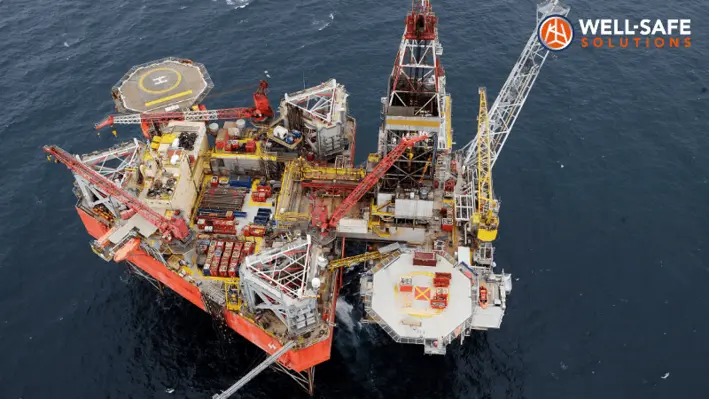

Ithaca Energy, an oil and gas operator has contracted Well-Safe Solutions to plug and abandon (P&A) six wells on the Anglia Platform in the Southern North Sea.
The contract – for an undisclosed sum – will see the Aberdeen-based well decommissioning specialists provide project management, well engineering and all managed delivery services for the project.
The Well-Safe Protector, a heavy-duty harsh environment jack-up rig, is nearing the end of extensive technical preparations and will mobilise to the field in late summer 2022.
Matt Jenkins, Chief Operating Officer at Well-Safe Solutions, said, “This full-service contract is further vindication of our operating model and allows Ithaca to realise the benefits of Well-Safe’s extensive experience in the Southern North Sea. Well-Safe delivers environmentally-friendly and cost-effective well decommissioning operations, unlocking key learnings over multi-well, multi-operator campaigns."
An option to P&A an additional three subsea wells is also available during 2023.
Jane Eddie, Bid Manager, added, “We have worked closely with Ithaca Energy to design a contract which meets their needs and – crucially – those of Offshore Energies UK, the North Sea Transition Authority and other industry stakeholders.”
“Our team is uniquely positioned to support Ithaca Energy with their decommissioning obligations, as we are the first UK-based company with owner-operated rigs to exclusively perform well P&A operations.”
Ricky Thomson, OEUK Decommissioning Manager, said, “Decommissioning has a crucial role to play in helping the UK deliver its net zero ambitions, as outlined in the North Sea Transition Deal. The UK’s decommissioning industry has an incredibly exciting future ahead, and projects like this will be vitally important to realising those ambitions.
This contract announcement follows recent news of Well-Safe Solutions’ purchase of the WilPhoenix semi-submersible rig from Awilco Drilling. The rig will now undergo conversion for well P&A activity and has been renamed the Well-Safe Defender.
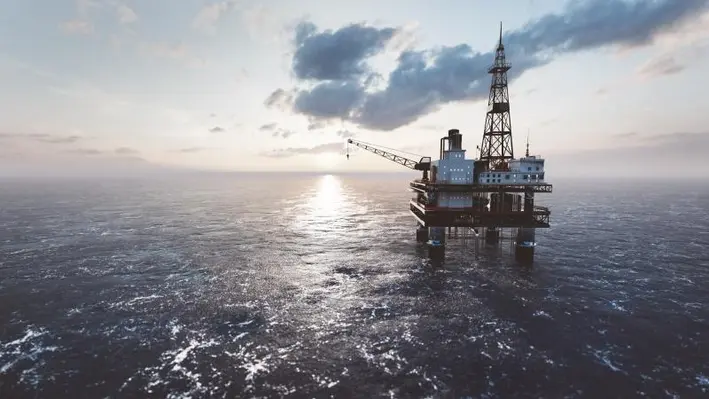
 Esso Australia Pty Ltd, a subsidiary of ExxonMobil Australia Pty Ltd and operator of the Gippsland Basin Joint Venture recently announced the commencement of a technical tender process for decommissioning of a number of its facilities in the Bass Strait.
Esso Australia Pty Ltd, a subsidiary of ExxonMobil Australia Pty Ltd and operator of the Gippsland Basin Joint Venture recently announced the commencement of a technical tender process for decommissioning of a number of its facilities in the Bass Strait.
The company is said to be requesting technical submissions from a number of experienced offshore heavy lift contractors for this initial tender phase, who will each outline how they propose to undertake the platform removal activities required.
“Given the complexity of decommissioning offshore facilities, we expect each vendor will propose a unique approach to platform removal in the Bass Strait, based on their capabilities and experience,” said ExxonMobil Australia Chair, Dylan Pugh.
“We will then consider all the options presented, ensuring they meet our own, community and regulator expectations, before moving onto the final commercial tender process next year,” added Dylan.
Over the last few years, Esso Australia has completed around $600mn of early decommissioning works in the Bass Strait, including successfully removing the Seahorse and Tarwhine facilities, completing plug and abandonment activities on our Blackback and Whiting wells, and significantly progressing well-decommissioning activities on Kingfish B and Mackerel.
“As the operator of some of Australia’s most mature oil and gas fields, Esso Australia is committed to safely and responsibly decommissioning our Bass Strait offshore facilities,” said Pugh.
“As we continue to progress these important early decommissioning works, this technical tender is an important step in preparing for the eventual decommissioning of a number of our facilities that are to cease production in the near future.”
Page 77 of 111